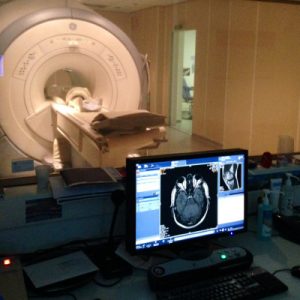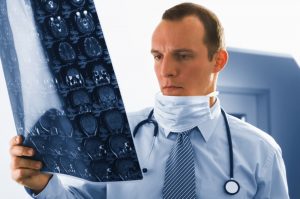Most patients getting an MRI don’t know to ask a critical question: Will the MRI use gadolinium or not? Researchers have found that the gadolinium-based contrast agent (GBCA) can leave metal deposits in the body’s organs and tissues. This includes the brain. Medical professionals believe that this dye is harmlessly expelled by the body, however, for many, it does not.
About Gadolinium
 Gadolinium is a chemical element carrying the atomic number 64 and the atomic symbol Gd. Belonging to a group of elements in the periodic table called Lanthanides, the chemical is a rare earth element typically used in microwave applications, color TV tubes, synthetic gemstones, compact discs, and computer memory. This chemical element is widely used as an injectable contrast agent when patients undergo magnetic resonance Imaging (MRI) and magnetic resonance angiography (MRA) scans.
Gadolinium is a chemical element carrying the atomic number 64 and the atomic symbol Gd. Belonging to a group of elements in the periodic table called Lanthanides, the chemical is a rare earth element typically used in microwave applications, color TV tubes, synthetic gemstones, compact discs, and computer memory. This chemical element is widely used as an injectable contrast agent when patients undergo magnetic resonance Imaging (MRI) and magnetic resonance angiography (MRA) scans.
Medical professionals have used GBCAs since 1988 for between 33-50% of all exams, and they considered to be safe. Healthcare providers forget that the contrast dye is not always necessary. These medical professionals think that this chemical agent is harmless, however, for many, it is not. Now, reports indicate that the body retains the chemical in the body and in some cases have adverse side effects. This side effect is Gadolinium Deposition Disease.
Effects of Gadolinium Deposition Disease
Gadolinium Deposition Disease (GDD) is when those with normal or near normal renal function develop persistent symptoms that arise within two months after the administration of GBCAs. The FDA conducted a review of the AERS database along with additional literature and found many reports of GDD. Many of which happened within hours to days after receiving a GBCA.
Symptoms also include:
- A persistent headache
- Bone and joint pain
- “Brain fog”
- Thickening of soft tissue
- Skin that appears spongy or rubbery
- Painful tendons and ligaments
- Tightness in hands and feet
- Burning, cutting or pins and needles pain in arms, legs, and torso
Many end up bedridden or in wheelchairs due to their loss of mobility and pain. It doesn’t matter a patient’s health beforehand. Top level athletes or young parents have been unable to work again after GDD. Treatments are costly, and there is not a cure.
Free Case Evaluation
 A gadolinium lawsuit may be an option for patients suffering from gadolinium retention and related complications. Gadolinium, used in dyes to increase the clarity of MRI and MRA scans, can create chemical element retention in the body, Therefore, this increases the risk of gadolinium deposition disease and nephrogenic systemic fibrosis. These conditions are accompanied by symptoms that include severe physical pain and cognitive difficulties. Affected patients and their loved ones may be able to file a lawsuit and recover damages.
A gadolinium lawsuit may be an option for patients suffering from gadolinium retention and related complications. Gadolinium, used in dyes to increase the clarity of MRI and MRA scans, can create chemical element retention in the body, Therefore, this increases the risk of gadolinium deposition disease and nephrogenic systemic fibrosis. These conditions are accompanied by symptoms that include severe physical pain and cognitive difficulties. Affected patients and their loved ones may be able to file a lawsuit and recover damages.
For more information, contact The Michael Brady Lynch Firm. We offer free, confidential, no-obligation consultations. We have also over 20 years experience helping consumers injured by unsafe products manufactured by large companies.


